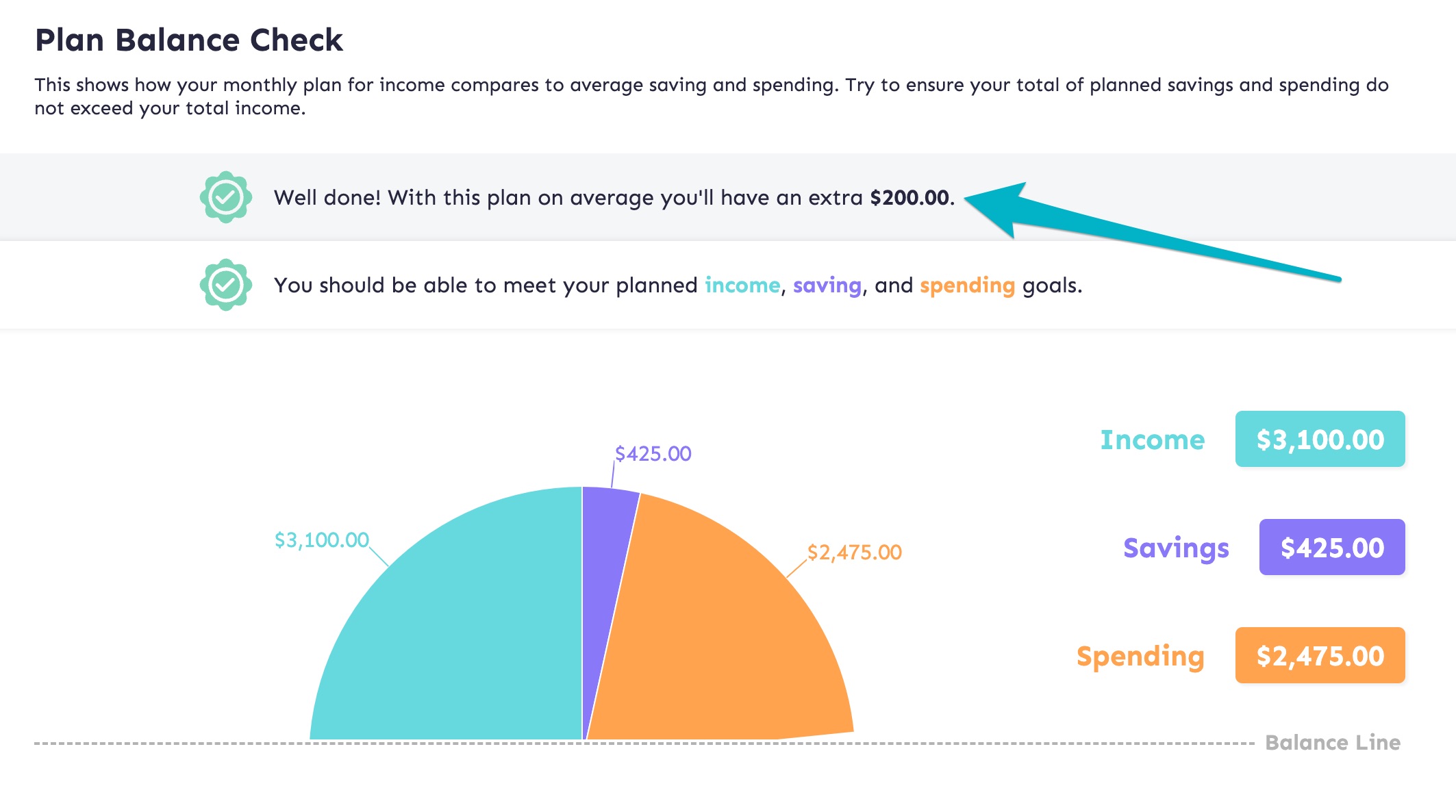Quick Look
- MoneySwell’s tools can help you determine how much more you can afford to put toward your emergency fund. (See below.)
- If it’s not clear if you can afford to increase your automatic transfer to your savings account, see the Review Tab section below for a suggestion.
- The sooner you reach your “Growth” level, the sooner you can allocate more of your money to other items, like paying off medium-interest debt, saving for a vacation etc.
Contents
To determine how much you can put in your emergency fund and still meet your obligations, look at your MoneySwell Budget Planner tool and follow the steps below.
Plan Tab
Look at the graph at the bottom of the “Plan” tab. If your plan doesn’t extend past the balance line, consider increasing your automatic funding by the extra amount. If your plan is perfectly balanced or slightly imbalanced, review your other expenses and see if it’s possible to cut back. Lastly, consider if there are any ways you can increase your income. Every dollar you increase your income by is a dollar you can allocate toward saving.
Update Tab
If you have a few months of data entered, go to the “Update” tab and look through a few months. Look at the graph and see how your actual income and your actual spending compare. If you’re regularly earning more than what you’re spending and saving, take some portion of that difference and use that to increase your savings.
For example: If your net earnings average $2,000 per month, and your net expenditures average $1,500 per month, you could conceivably save a total of $500 a month ($2,0000 – $1,500). But if your automatic savings transfer is only $200 a month, you have an additional $300 you could contribute. Since spending and income may fluctuate from month to month, we wouldn’t recommend allocating the full $300. But you may feel comfortable with and increase of half that amount.
Review Tab
If you don’t feel comfortable increasing your automatic savings transfer, go to the “Review” tab and look at the “Spending” bar. If your spending is behind the dotted line, hover over that line to see what your “pace spending” would be. Then, subtract your actual spending from your pace spending. The difference is the amount you can make as a one time transfer.

If the Review tab shows you’re better than goal pace with spending, consider a lump sum transfer of the difference.
For example: If your “pace spending” says you could have spent up to $600 by this point but you’ve only spent $475, that means you are ahead of pace by $125 and should be able to make a one time transfer of up to $125 to your emergency fund.
Do this every month or every few months to ensure you’re growing your emergency fund.
If you’re able to do this consistently, every once in a while you may want to reward yourself by taking a portion of the amount you could allocate to savings and treat yourself guilt-free to something special. This is up to your own psychology but if an occasional reward helps keep you on track, go for it! After all, you’ve earned it with your good habits!
Take Action
Go to your bank’s website and either make an update to your regular scheduled transfers or make a one-time transfer based on what you’re currently able to do. If you plan to make additional one time transfers in the months ahead, set a reminder on your phone or calendar.
